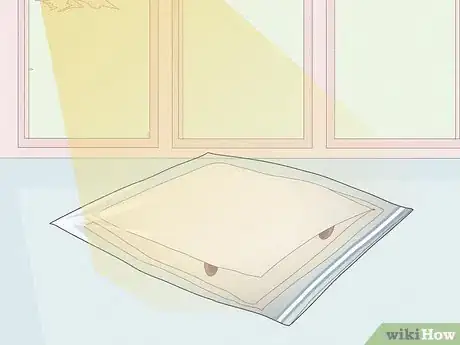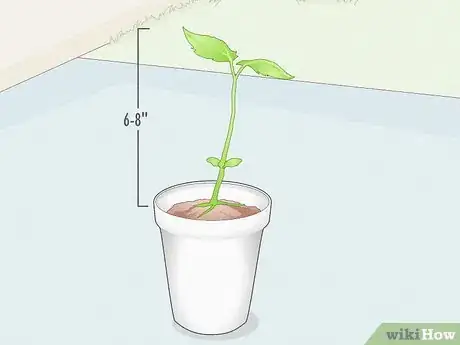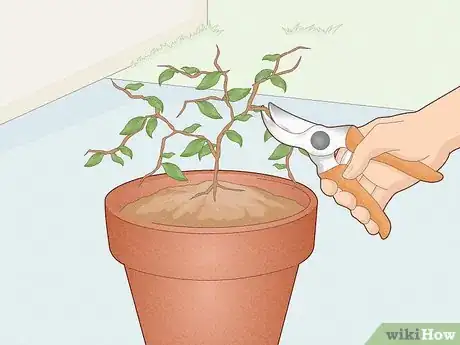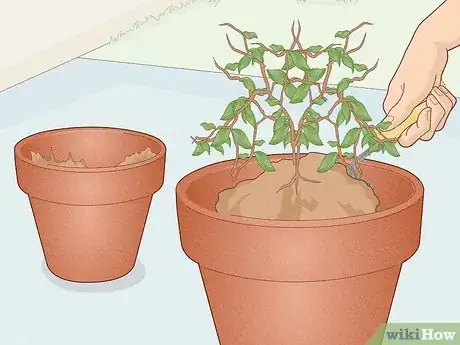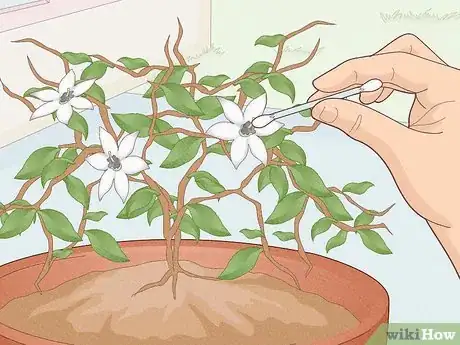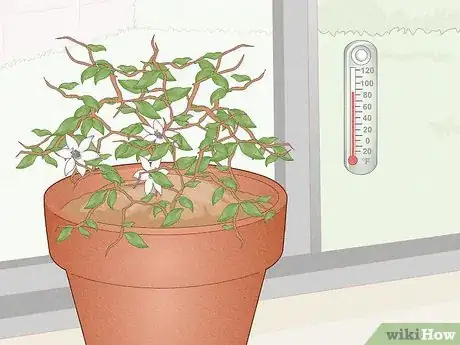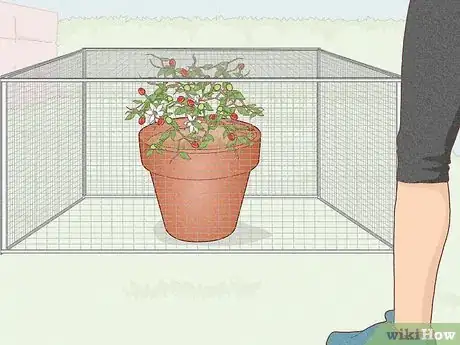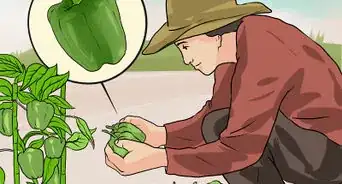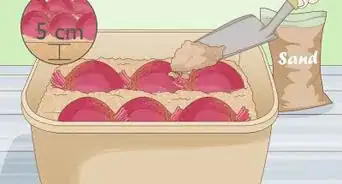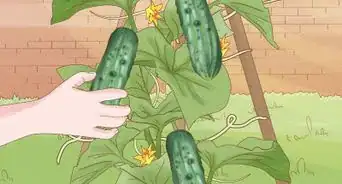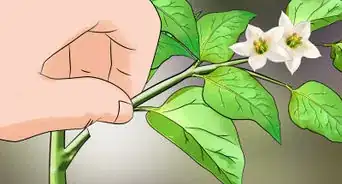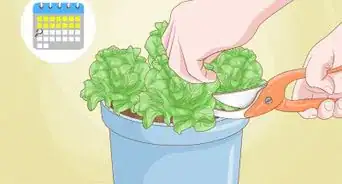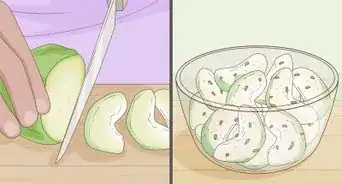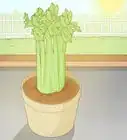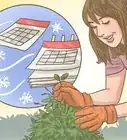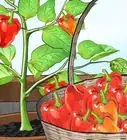wikiHow is a “wiki,” similar to Wikipedia, which means that many of our articles are co-written by multiple authors. To create this article, volunteer authors worked to edit and improve it over time.
wikiHow marks an article as reader-approved once it receives enough positive feedback. In this case, 100% of readers who voted found the article helpful, earning it our reader-approved status.
This article has been viewed 15,020 times.
Learn more...
Wild Sonoran chiltepin peppers (Capsicum annuum var. glabriusculum), also known as the bird pepper, grow naturally in southern parts of Texas and Northern Mexico. The plants grow from 3-6 ft. in height and resemble a shrub. They produce small white flowers and eventually small green peppers, which will ripen to a bright red. Temperature and humidity are very important to the growth and production of these plants, so growing your own takes a little bit of care and prep work.
Steps
-
1Propagate your seeds. If your peppers are fresh, completely dry the seeds, place multiple seeds in a damp paper towel inside a ziplock bag, and place in a window that receives direct sunlight as well as maintains heat.
- Other methods of seed propagation may be used. You may also plant 2-3 seeds in small styrofoam cup with soil. Be sure all seeds are in the same hole approximately 1/2 to 1 inch deep. Use a well-draining soil such as a cactus mix.
-
2Keep an eye out for sprouts. Once your peppers have sprouted roots and began to appear out of your soil (approximately 10-14 days from planting), you may notice more than one plant has sprouted.
- You may thin down to one plant you determine to be the hardiest, but it is not absolutely necessary.
Advertisement -
3Keep the plants in styrofoam cups until they are about 6-8 inches tall. Water plants only once soil has begun to dry (typically once a week to moisten soil).
-
4Re-pot your plants. Now that your plants are approximately 6-8 inches tall, it is a good time to re-pot them. Be sure to use well draining soil such as a cactus mix.
- Transplant from your styrofoam cup to a 5-6 inch diameter self-watering planter. Letting your soil dry up in the cup will allow you to easily remove each plant by grabbing the stem at the base and gently pulling the cup off. Do not try and remove excess soil around the root ball.
- Plants should be placed in direct sunlight for 10-12 hours such as in a well lit window or under grow lights. Be sure the temperature of the soil is kept relatively warm (70-80 degrees F).
-
5Prune your plants. As the plants begin to grow, minor pruning is needed but does help with the the growing of your plant. Remove any leaves that begin to turn yellow/brown/black by cutting them as close to the stem or branch as possible.
- To increase the fullness of your plant, you may cut both the stem and branches once they have produced 3 forks and has sprouted new growth from the center of the fork.
- Your plants will grow relatively quickly if given the proper conditions of high temperature and medium humidity (75-90 degrees F and 40-60% humidity).
- If you do move your plants outside, be sure to place in a semi-shaded area out of full sun, as these plants grow naturally as a shrub under leafy trees that provide cover from too much direct light but allow for high heat conditions. Trimmed stems can also be used to start other plants as well.
-
6Increase the pot size when needed. Once your plants begin to outgrow your 5-6 inch plants (approximately 24-36 inches in height), you may now re-pot and consolidate your plants. It is now time to increase the size of your pots to 15 inch in diameter or bigger.
- You can plant 2-3 plants in a 15 inch planter and the plants will not compete for nutrients.
- Organic nutrients can be used to maintain nutrient levels for proper plant growth.
-
7Pollinate the flowers. When flowers begin to show, pollinate them by hand with the use of a Q-Tip or other object. Oils from your fingers seem to keep the peppers from forming.
-
8Keep the plants at the right temperature. Once you begin to see flowers the heating requirements change a bit. These plants still require the high temperature of 75-95 degrees F during the day but must cool to below 70 degrees F at night.
- Unless you live in an area where these temperature gradients can be achieved naturally, it is recommended to move the plants indoors at night where they can be cooled to below 70 degrees F.
-
9Watch for your peppers. These plants are quite tough when it comes to keeping them alive but very sensitive when dealing with fruiting. If they're kept outdoors, provide cover from squirrels and birds as they will eat the tiny peppers. Peppers can take anywhere from 3-6 weeks after flowing, if given the proper conditions.
Warnings
- Do not over water as this could result in water-shock or root rot (improper soil drainage).⧼thumbs_response⧽
- Do not prune too early.⧼thumbs_response⧽
